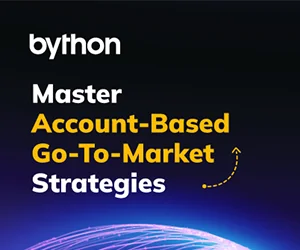More than a year after the public launch of ChatGPT, generative AI is now an area of extreme interest for businesses and individuals – and with good reason.
McKinsey estimates that Gen AI could annually increase in value by a staggering $2.6 trillion to $4.4 trillion globally. Financial services are anticipated to be one of the most significant prospects among industries, with a yearly potential of $200 billion to $340 billion, mainly due to increased productivity.
Generative AI in banking can create content automatically, expedite research, and automate data extraction. These processes are foundational to many banking operations, including but not limited to credit authorization, pitchbook development, and due diligence.
Efficiency and process optimization are standout benefits of gen AI, albeit within a controlled environment.
What is Generative AI?
Generative AI (GenAI) is an artificial intelligence sub-set that analyzes pre-existing data, including but not limited to text, images, audio, and videos, to produce new material. Artificial intelligence models undergo extensive training using visual, auditory, and written data to discern structures and patterns within the data. The predominant interaction with Gen AI is via a natural language text interface, wherein an individual formulates a statement or query to instruct the AI on the desired output.
Mainstream banks have prioritized using automation, containerization, and cloud technologies to simplify the operational intricacies of crucial banking services over the last decade. Access to data has been democratized, and an entirely new array of online financial services has developed as a consequence.
Today, generative AI has the power to completely transform how front, middle, and back-office processes are managed. It could support the delivery of banking services on an unprecedented scale and facilitate democratized access to sophisticated insights.
Generative AI in Banking: Opportunities and Applications
There are three reasons why generative AI in banking represents a tremendous opportunity. To begin with, the banking sector has already witnessed significant advancements by developing sophisticated machine learning algorithms, including deep learning and reinforcement learning.
Therefore, financial institutions are uniquely positioned to leverage generative AI capabilities across various applications. This is enabled by ready infrastructure, systems, and processes that have all come to fruition in the last few years.
Also, conventional approaches to data analysis need to be revised for the massive amounts of data generated by institutions. Generative AI offers a method for generating new insights, projections, and content by optimizing this data.
Third, banks employ a vast population, many of whom are hired to perform manual tasks. Gen AI-led processes are always more streamlined and consistent. As a result, financial institutions can mechanize previously labor-intensive processes, such as data analysis and fraud detection, and reduce false positives.
4 Key Applications of Generative AI in Banking
As generative AI technology evolves and becomes more mature, banks can leverage it to:
-
Transform customer support
Gen AI will enormously impact how businesses manage their back-office and middle-office operations. Automating laborious tasks such as transaction processing, data input, and reporting will reduce operational expenses and free up precious human intellectual capital.
This allows bank workers to allocate more time to innovation, creativity, and personalized customer service. Generative AI can assist service representatives, for instance, throughout customer conversations. The large-language model (LLM) can independently generate relevant data points and take notes for the agent. This lets individuals focus more on helping customers and responding to queries faster.
-
Embed generative AI in vertical operations like HR and marketing
The software partners who power the larger banking ecosystem now steadfastly incorporate gen AI into every process and function. This will massively impact productivity.
In March 2023, Microsoft, for instance, initiated the integration of LLMs into its Microsoft 365 suite of applications with the release of Copilot.
Similarly, Salesforce now offers Einstein, a CRM assistant powered by Gen AI, and Workday recently declared its intention to incorporate Gen AI into its suite of applications. We already have examples like TalentGPT by Beamery, the company serving Wells Fargo. This will create a culture of gen AI-enabled operations across the banking sector.
-
Simplify the credit approval process
Gen AI chatbots can guide customers as they finish the loan application process. Moreover, financial institutions can use the tool to authenticate consumer data using natural language conversations.
Credit analysts can evaluate an applicant’s creditworthiness by examining their financial history and credit scores using generative AI. Moreover, assessing loan application risks can be executed by analyzing data derived from unstructured sources, like social media platforms.
Loan underwriters can also expedite the underwriting process using Gen AI once the approvals are in. Finally, lenders can automatically generate significant portions of credit memos, including the executive brief, business outline, and sector evaluation.
-
Personalize banking experiences
A report by Forrester notes that 72% of banking customers believe banking products are of far greater value when customized according to their specific requirements. Generative AI in banking can personalize experiences using consumer data analysis; this is followed by a set of unique recommendations, all rendered in a friendly and conversational tone.
It may, for instance, offer a credit card to a customer that fits with their lifestyle, spending patterns, and financial goals. Further, Gen AI can impart financial literacy awareness to individuals in a natural and human-like manner by curating data from various sources.
Developing a Strategy for AI Integration in Banking
Any financial institution’s digital infrastructure and workforce will positively or negatively impact the challenges ahead as one embraces Gen AI. To address these, banks need a well-defined roadmap:
-
Leadership buy-in
Before anything else, management teams must formulate a strategic perspective on the possible business applications of gen AI and AI in its entirety. For instance, leaders of a wealth management firm might recognize how gen AI could revolutionize customer recommendations and experiences.
With business unit-level accountability and well-defined “from/to” targets, senior leadership alignment and interventions like these can push Gen AI initiatives forward.
-
Overhauling talent
Banks need to consider strategies for enhancing their workforce’s skill sets or recruiting the necessary talent to keep up with gen AI, and its various applications.
Two or three high-impact preliminary models are sufficient to reach a consensus on the value of gen AI. Further, business leaders can guide and inform employees about the many real-world instances of how gen AI is making a genuine difference.
Additionally, it would be best to confront employee concerns on job security and automation head-on. This can be improved by clear and direct communication on how gen AI can automate labor-intensive tasks, enhancing employee experience.
Finally, talent profiles are emerging in finance due to Gen AI, including prompt engineering and model fine-tuning. Therefore, institutions must commit to developing the necessary job roles, competencies, and capabilities that emerge from this movement.
-
The technology infrastructure
Banks must carefully evaluate “build versus buy versus partner” options. Successful gen AI initiatives are predicated on capabilities like cloud infrastructure, foundation models, and MLOps platforms.
Enforcing these solutions calls for increased trust and confidence in your vendors. Likewise, it’s essential to have an integrated architecture that facilitates Gen AI. Remember, most banks will select and introduce gen AI models with pre-existing systems, workflows, enterprise apps, and data sources. Maintenance and effective integration of the model is, therefore, an essential part of the roadmap.
In Conclusion: Risks and Controls for Gen AI
These are exciting times; generative AI in banking brings an astounding range of benefits, even with its share of risks and dangers. Financial institutions are still trying to mitigate these risks and will have to revise their governance frameworks and establish fresh controls for Gen AI soon.
For instance, Generative AI may exhibit algorithmic bias due to erroneous engineering decisions or imprecise training data. Moreover, privacy concerns can be exacerbated due to the heavy utilization of personal or other sensitive data during model training. Finally, banking applications powered by gen AI are susceptible to security breaches and manipulation.
Responsible, guided, and people-first usage is a must-have from the get-go if looking at sustainable scalability and expansion.







